Character Build: Great Weapon Battle Master Fighter
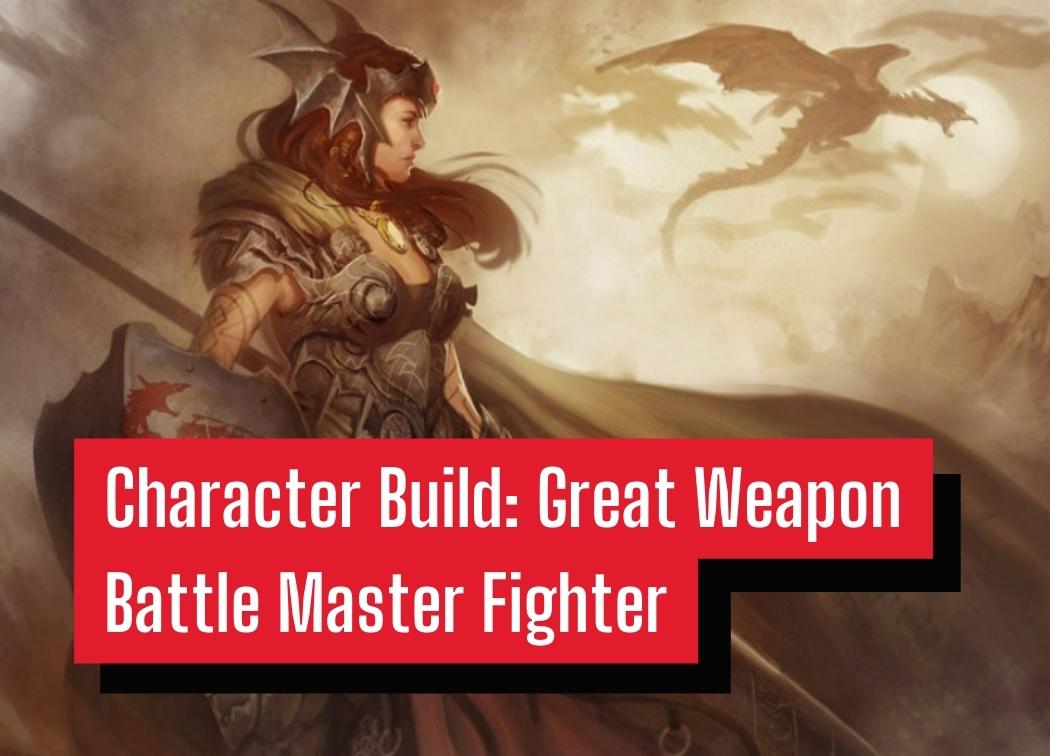
First and foremost we’re going to be a semi-tanky front-line character. We’ll be donning heavy armor and rushing into melee combat whenever possible. However, we’ll be sure to not dump Dexterity entirely as it’s still a core saving throw ability, used in initiative, and may be needed whenever we need to use ranged attacks.
The primary draw of this build, though, is its high damage dealing capabilities by using massive two-handed weapons. It’s a risk-reward build that squeezes the most out of the special -5 to attack +10 to damage (-5/+10) weapon attack portion of the Great Weapon Master feat.
You can take a punch, but you can strike right back with an even bigger wallop. That’s the name of the game.
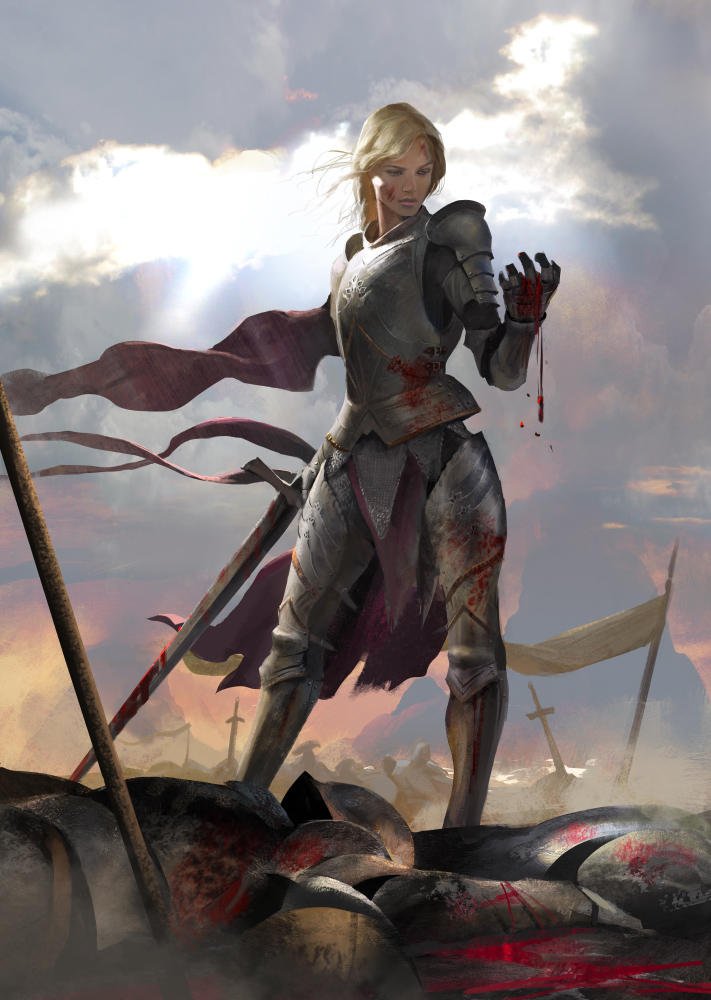
Master of the Battlefield
One of my favorite archetypes is the Battle Master Fighter. So the secondary goal of this build is to combine two of my favorite martial parts of D&D 5e. Battle Master Fighter and the high-risk, high-reward mechanics of Great Weapon Master.
Battle Master Fighter comes with a lot of different maneuvers to spice up the basic melee weapon attacks that fighters revolve around. These maneuvers can encompass different offensive, defensive, and utility capabilities. We’re going to focus primarily on our offenses in this build, but options are always great.
Besides maneuvers, the Battle Master archetype provides our fighter with some more utility as well. You’re more than just a swinging sword, even though that’s the primary identity of our Great Weapon Master, Battle Master Fighter!
Books Needed for this Build
Optional Books for Races:
- Mordenkainen’s Tomb of Foes: Githyanki
- Volo’s Guide to Monsters: Bugbear, Goliath, and Orc
- Guildmasters’ Guide to Ravnica: Minotaur
Level 1
Class: Fighter
Background: Soldier
Note: I chose this background primarily with flavor in mind. It gives our character proficiency in both Athletics and Intimidation. If you are playing as an Orc or another race that has proficiency in Intimidation you should check out some other backgrounds.
Race: Variant Human, Half-Orc, Orc, Goliath, Bugbear, Dragonborn, or Githyanki
Note: I’m going to be using Half-Orc for this build. However, any of the +2 STR races will do. Bugbears were a close runner-up but their traits heavily benefit from being stealthy which this build isn’t due to its use of heavy armor. Variant human is a great choice if you want to get Great Weapon Master a bit early.
Ability Scores: This was done using point buy. Check out this post for more info on point buy!
STR: 16 (+3) – +2 from Half-Orc
DEX: 14 (+2)
CON: 16 (+3) – +1 from Half-Orc
INT: 8 (-1)
WIS: 12 (+1)
CHA: 8 (-1)
Note: As you can imagine, Strength is going to be the bread-and-butter of the build. We need it to deal damage which is our priority in combat. Constitution is not far behind in terms of importance since the sturdier we are, the longer we can survive to deal more damage. We’ll then dump the rest of our points into Dexterity and Wisdom as they are both frequent saving throws and provide some utility.
Skills: Perception and Acrobatics (Race), Intimidation & Athletics (Background)
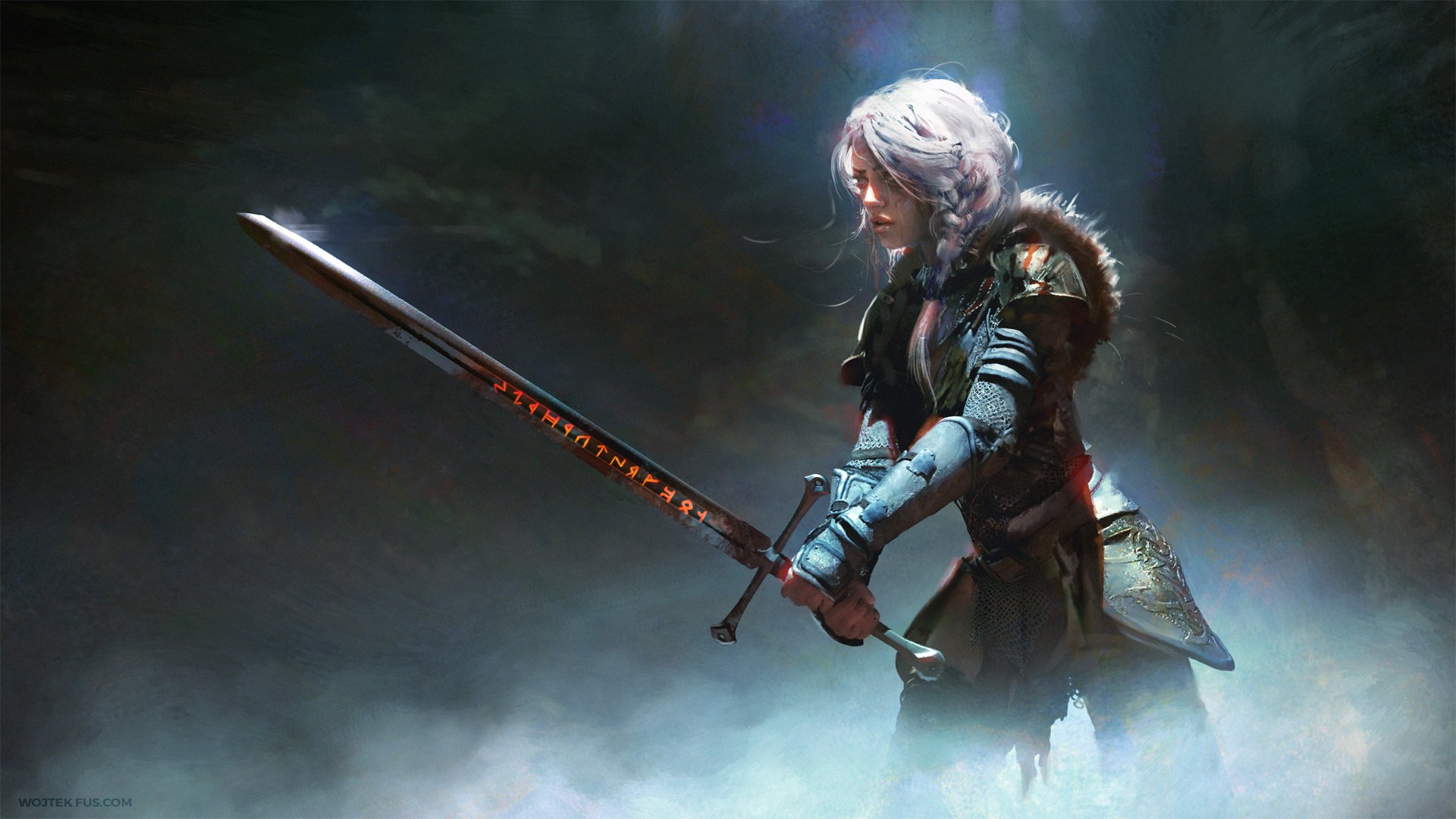
Weapon Choices
Per Rules as Written (RaW), a level 1 fighter can start with the choice of a martial weapon and a shield or two martial weapons. While it may be a good idea to grab a one-handed weapon and a shield later, we won’t use one often. Take the two martial weapon option instead.
Great Weapon Master is the feat that carves out this build’s niche. It specifically requires you to be wielding a weapon with the Heavy property. We have quite a few options to choose from. Take a look at the table below for our options.
| Weapon | Damage | Additional Properties | Polearm Master |
|---|---|---|---|
| Glaive | 1d10 slashing | reach, two-handed | Yes |
| Greataxe | 1d12 slashing | two-handed | No |
| Greatsword | 2d6 slashing | two-handed | No |
| Halberd | 1d10 slashing | reach, two-handed | Yes |
| Maul | 2d6 bludgeoning | two-handed | No |
| Pike | 1d10 piercing | reach, two-handed | Opportunity Attack Only |
You’ll want to choose your weapons based on what type of fighter you’d like to be. If you’re looking into coupling this build with Polearm Master then you’ll want to take either the glaive or halberd as your primary weapon.
If you’re not looking to take Polearm Master you’ll probably find yourself choosing between the greatsword, greataxe, and maul. I lean more towards a combination of greatsword and maul despite being a half-orc. Two different weapon types and more consistent damage compared to the greataxe.
Another option is to grab a reach weapon and a weapon without reach. Cover all of your bases regardless of taking Polearm Master or not.
For this build, I’m going to focus on a character that isn’t taking Polearm Master. However, this build works perfectly fine with or without it.
Post Level 1
Fighter 20
This build is diving right into the fighter class and staying true to it for the entire campaign. Staying true to fighter nets us some extra ASIs making it a lot easier for us to grab a bunch of different feats while still being able to cap out our Strength easily.
Fighters also get a lot of extra attacks as they level up. While a Paladin or Barbarian can put out some massive damage in single attacks, this build gives us some heavy hits, but plenty of extra attacks and actions to take in combat.
We’ll also gain multiple uses of Indomitable by staying with a mono-fighter build making up for our lower Wisdom and Dexterity scores when they’re called upon to use for saving throws. There’s a fair amount of survivability that fighters gain in the later levels.
Ability Score Increases (ASIs)
We’ll gain 7 ASIs throughout our path to level 20. This gives us plenty of breathing room to beef up our ability scores or make pick up some feats to distinguish our playstyle.
As the name implies you should be grabbing Great Weapon Master as soon as possible. Ideally from your first ASI if you’re not playing as a variant human with access to it from level 1. From there you’ll have plenty of options to choose from to make this build unique!
Ability Score Priorities
Strength >>>> Constitution > Dexterity > Wisdom >=Intelligence and Charisma
Depending on your race, you’ll want to use the first 2-3 ASIs capping out your Strength at 20. This will improve both your damage and your ability to hit with your melee attacks. This is particularly important as it makes up for the -5 you’ll be taking when using Great Weapon Master in combat.
Constitution is our primary survival ability score. Your character will primarily be wearing heavy armor so they won’t benefit from Dexterity directly. I would suggest putting at least 1 ASI into Constitution to beef yourself up a bit more. You don’t need to cap it at 20, but it’s not a waste if you do!
Dexterity is still going to be an extremely useful ability score despite us using Strength and Constitution the vast majority of the time. Using a couple of ASIs to bump it up will improve our initiative bonus and ability to make Dexterity saving throws. We also may be forced to use ranged weaponry once in a while so being able to reliably hit with a longbow or heavy crossbow is going to be handy.
Wisdom pulls ahead of our dump stats (Intelligence and Charisma) solely because of Perception and the frequency of Wisdom saving throws.
We can afford to dump Intelligence and Charisma ability scores as they’re very rarely used for saving throws and are mostly used for exploration and role-playing. This build is combat-oriented, but you can certainly throw a few points into them at character creation or use an ASI if you’d like to become more well-rounded.
Feats
Great Weapon Master* – As you would expect, this feat is required for this build. It allows you to take a -5 to hit, but deal an additional +10 damage with a heavy weapon that you have proficiency with. It’s a fun high-risk, high-reward feat just like Sharpshooter. Great Weapon Master also gives you the ability to take a bonus action attack with your weapon if you drop a creature to 0 hp or roll a crit.
This build is centered around dealing tons of damage as a front-line semi-tanky character. We’ll use both aspects of this feat frequently, but as I mentioned it can be risky to use the -5/+10 portion of the feat. Be sure to get at least 16 (+3) in Strength to give yourself a bit more room to work with. I’d take this feat as your freebie if you decide to play a variant human.
Lucky – This feat works with any build because it’s just so good. It also has some excellent synergy with Great Weapon Master since it can let you reroll any d20 roll such as weapon attacks.
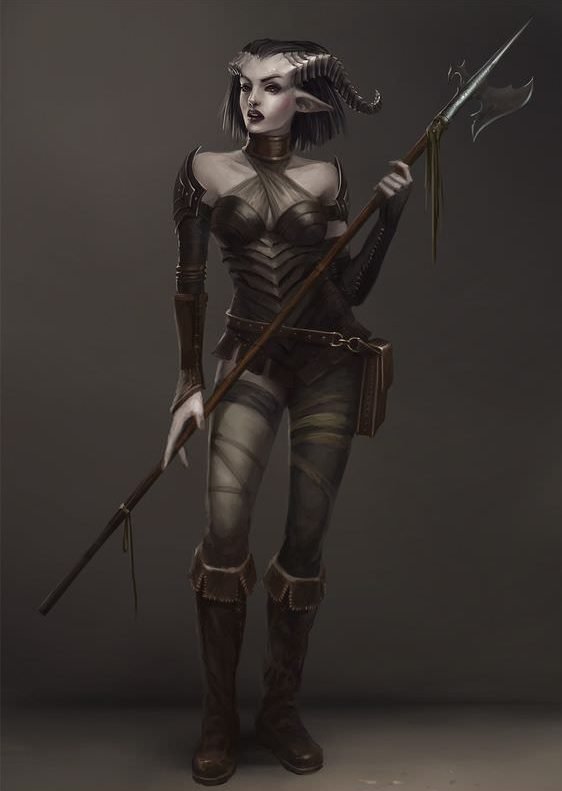
Polearm Master – Glaives and other polearms are heavy weapons and therefore will work with the Great Weapon Master feat. This is a fun skill to use as it gives you a reliable bonus action attack with the opposite end of your glaive or halberd that deals 1d4 bludgeoning damage. You’ll also be able to take opportunity attacks when creatures enter your reach.
Sentinel – This is an exceptional feat to pair up with Polearm Master due to the increased frequency of opportunity attacks you’ll be able to make, but it will work well with this build regardless. This feat gives you some crowd control options and additional openings for making opportunity attacks.
* – REQUIRED
Class Features
Fighting Style – Level 1
We immediately have a decision to make as soon as we take a level in fighter. What type of fighter will we be?
If you’re following this build, you’ve already made that decision. We’re a front-line fighter that prefers to wield two-handed heavy weapons. There’s only one option that benefits us in this role. Take Great Weapon Fighting.
What this does is allow you to reroll any damage dice that roll a 1 or 2 on an attack. Of course, you have to take the result even if it’s another 1 or 2, but it’s still a great way to raise your average damage. This is part of the reason that I prefer to use a greatsword or maul.
Second Wind – Level 1
Second Wind is the first feature we get that we can actively use. This is a great survivability tool as it allows you to regain health while using only a bonus action. We don’t have a lot of uses for our bonus action early on in this build so this feature can be used without sacrificing any of our damage output.
Once we get Great Weapon Master that will be a different story. We’ll then have a fairly regular option to make a weapon attack with our bonus action. However, Second Wind is still plenty useful outside of combat if we don’t have time to take a short rest!
Action Surge – Level 2 & 17
At level 2 we gain one of the best class features in the game, Action Surge. Using this gives you an additional action on your turn. We regain this feature after a short or long rest. The fighter is a short rest class so we’ll regularly regain our power and features upon each short rest.
We’ll then improve this feature at level 17. This gives us the ability to use Action Surge twice between a short or long rest. Keep in mind that you can only use Action Surge once per turn.
This does stack with Extra Attack at later levels which means at level 20 we can take a total of 8 attacks in a turn.
Extra Attack – Level 5, 11, & 20
Extra Attack is a passive ability and most of the martial classes have it. However, fighters have a much better version of the feature. Their Extra Attack continues to improve with the more levels of fighter your character takes.
From the get-go, you get the basic version of Extra Attack. When you use the Attack action you can make two attacks instead of one. Simple enough, and it’s a huge power-spike at level 5.
Levels 11 and 20 further improve the feature. At level 11 we’ll get to make 3 attacks with a single action. Our capstone is to be able to make 4 attacks in a single action. It’s not glamorous, but it’s powerful, flavorful, and fun.
Keep in mind that you’ll probably get a couple of cool magic weapons by the time you reach level 20. Your attacks are going to have some real heft to them and you’ll still be able to quickly cleave through your enemies.
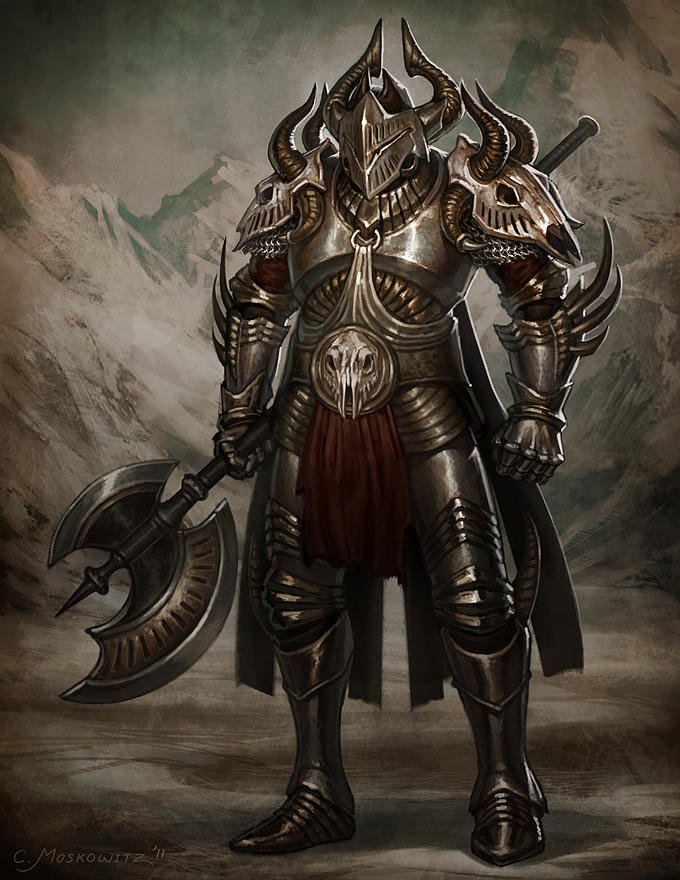
Indomitable – Level 9, 13, and 17
At level 9 we gain our last unique feature from the fighter class. Again it’s another, much-needed, survivability feature. Aside from Constitution, our saving throw abilities are not great, especially if we have to make a niche saving throw like an Intelligence saving throw.
Thankfully, with Indomitable we can reroll a saving throw that we’ve failed. This is particularly great because you make this roll after you’ve failed the saving throw. There’s no guesswork to do. But it’s not a guaranteed get-out-of-jail-free card either. It’s still a solid safety net, though.
This feature is only regained after a long rest, unlike the other fighter class features. However, this is barely a downside. The feature is a safety net, it’s not going to be constantly used.
At both 13th and 17th level, you’ll gain an additional use of Indomitable. This scales pretty well with the game as the higher level you get, the more deadly saving throws become. I also find that you make a lot more saving throws at high-level play so these additional uses are certainly welcome.
Martial Archetype – Battle Master
Combat Superiority – Level 3, 7, 10, and 15
This feature is the meat and potatoes of the Battle Master. Initially, at 3rd level, the archetype gives you access to three maneuvers of your choice. These are enhanced attacks or unique actions that you can use in battle. You can see all of the maneuvers on page 74 of the PHB. We’ll go over the maneuvers used in this build later in this article.
You learn 2 additional maneuvers at 7th, 10th, and 15th level. You can also replace a maneuver you already know with a different one at this time. This means that at 15th level we’ll have a total of 9 maneuvers out of the 16 that are printed in the PHB. A fair amount if you ask me!
To use a maneuver you’ll use one of your Superiority Dice. Initially, your Superiority Dice is a d8. Depending on the maneuver, you may have to use this before or after your attack has landed. You initially have 4 superiority dice that regain after a short rest. At 7th level you gain a 5th die then you gain a 6th die at level 15.
Below is the equation for your Maneuver Save DC. Some of your maneuvers will call upon a saving throw to be made by the target. You can use your Strength or Dexterity modifier, but for this build, we’ll be using our Strength modifier.
Maneuver Save DC = 8 + proficiency bonus + Strength or Dexterity modifier
Student of War – Level 3
Battle Masters by trade are well-rounded students. They’ve studied strategy on the battlefield and have enhanced their minds to make quick strategical decisions on the fly.
By being a quick study, it’s natural to assume that you’d pick up some additional knowledge. For example, an in-depth hobby to keep your mind sharp.
Student of War gives you proficiency in one type of artisan’s tools. Your choice should be based on flavor or whatever sounds most interesting to you. This decision doesn’t make any difference in the success of this build.
Know Your Enemy – Level 7
Know Your Enemy is a very interesting feature. Essentially if you can study a creature for at least 1 minute outside of combat you can learn some unique information about them. You can pick 2 of the following pieces of information:
- Strength score
- Dexterity score
- Constitution score
- Armor Class
- Current hit points
- Total class levels (if any)
- Fighter class levels (if any)
I’d say that the vast majority of the time you’ll be asking your DM for the AC and HP of the creature. AC, in particular, is important information as it can help us calculate our chances to hit when using our Great Weapon Master to gain -5/+10 on our attacks.
It’s a fun and flavorful feature and can give you and your companions some great information to better plan your tactics against your next foe.
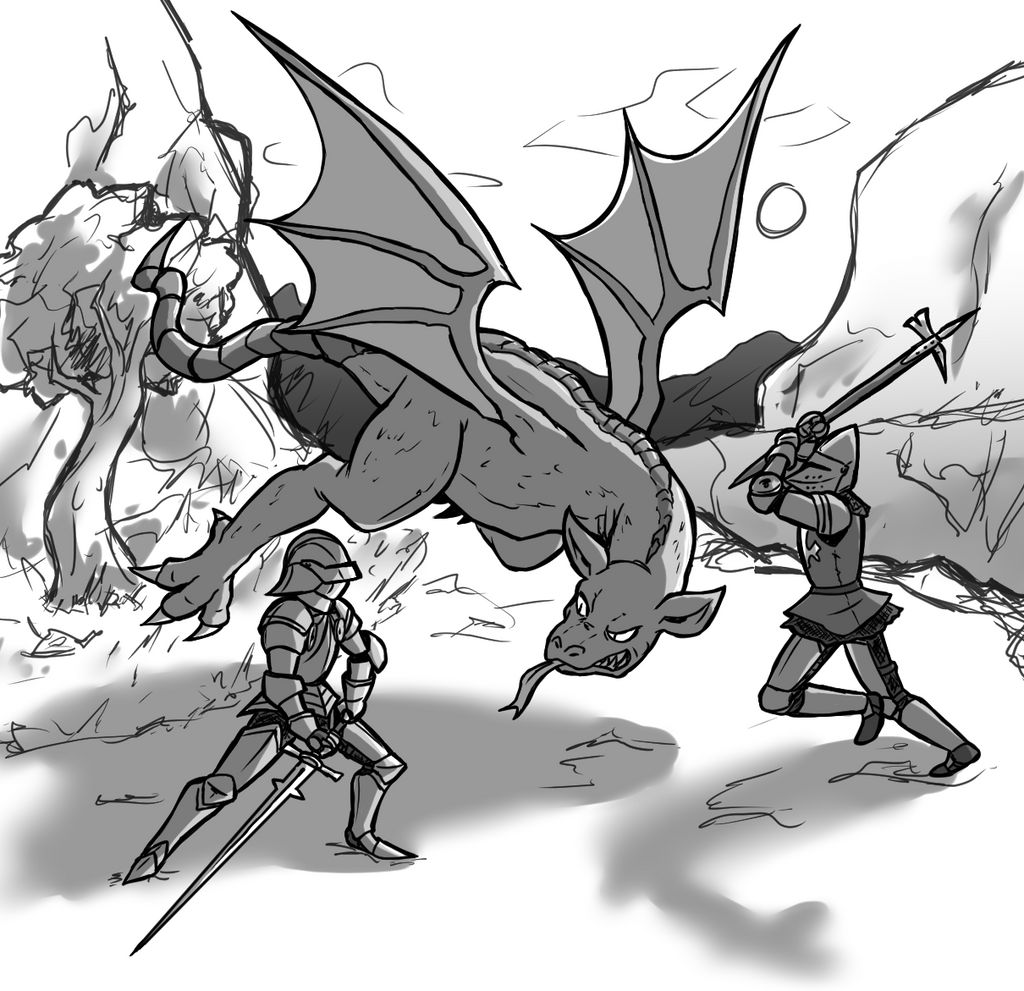
Improved Combat Superiority – Level 10 and 18
Improved Combat Superiority is simply a passive buff to your Maneuvers. Its purpose is to keep your damage and utility up with casters who are regularly getting more and more powerful spells at this point in the game.
At level 10 your Superiority Dice become d10s and then d12s at level 18.
Relentless – Level 15
While it’s not difficult to take a short rest to regain your Superiority Dice, among all of the other features you have, Relentless gives you a way to ensure that you can reliably make use of your iconic archetype feature even between short rests.
You gain 1 superiority die after rolling initiative for an encounter if you do not have any superiority dice remaining.
Short, sweet, and to the point. You don’t have to worry as much about using the full potential of your power during a fight. You’ll reliably have at least one in every encounter from this point forward.
Maneuver Choices
Defensive
Defensive maneuvers improve your defenses. These come in the form of either boosting your AC or reducing the damage the target can do to you.
Disarming Strike
As the name implies, you can force a creature you hit with a weapon attack to make a saving throw. They’ll drop their weapon on a failed save.
This can be a solid defensive maneuver for your whole party to benefit from since you can use your object interaction during your turn to kick the weapon away or pick it up yourself with your free hand.
Your opponent will have to either draw one of their other weapons or step away to pick up theirs before they can make their attacks. If you can pull this off, you may give yourself and any other allies within 5 ft. of the creatures with an opportunity attack if they run to grab their weapon!
Evasive Footwork
This is a solid defensive maneuver to improve your survivability. This build revolves around getting up close to your enemies. The risk that comes with that play style, of course, is that you may sometimes find yourself out of position.
You can use Evasive Footwork to give yourself additional AC while you move around. This allows you to take the Attack action, but still, safely move out-of-the-way thanks to your increased AC.
Parry
After being hit with an attack from another creature you can use a reaction to reduce the damage based on your superiority dice roll + your Dexterity modifier.
Parry is an all-around excellent defensive maneuver and part of the reason why you should throw a few points into Dexterity in a Strength-based fighter build.
You may not need this maneuver often, but when you do you’ll be glad you have it. It’s especially great at low levels where creatures do less damage each hit.
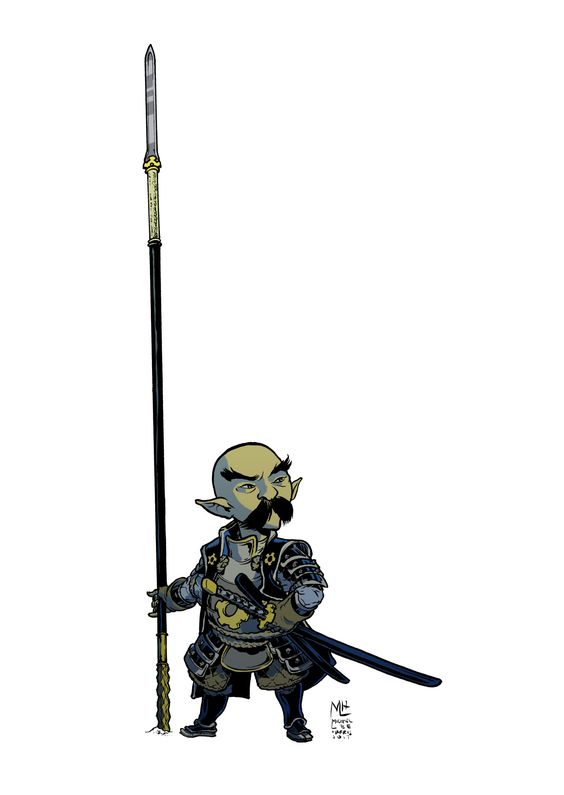
Offensive
Offensive maneuvers improve either your ability to strike a target or increase the damage you can deal. Some of these maneuvers may even give you additional opportunities to make attacks when you use them.
Feinting Strike
You can use a bonus action to feint and temporarily confuse the enemy. This gives you advantage on the next attack you make against the creature and gives you some bonus damage as well.
This is a solid maneuver for us since we’re not always going to be using our bonus action. It’s a particularly great maneuver for our character before we get Great Weapon Master. It gives us a bit more breathing room for our -5/+10 attacks as well.
Lunging Attack
You increase your reach by 5 ft. for an attack and deal some bonus damage if you hit. This is a very situational maneuver and I feel it would primarily be used in situations where your movement is just 5 ft. shy from attacking your target.
Precision Attack
This maneuver lets you add a superiority die to your attack roll after you’ve seen the roll, but before the DM confirms it as a hit or a miss. This is a solid maneuver since it doesn’t require additional portions of our action economy but still gives us a +4.5 – 6.5 to hit depending on our Improved Combat Superiority.
This is solid as it essentially makes up for the -5 to hit from a Great Weapon Master attack. It’s a solid choice for later in the game when you start fighting more well-armored foes.
Riposte
Punish your enemies by using your reaction to attack them when they miss you with a melee weapon attack. You’ll deal additional damage if you hit with this attack as well!
It’s a solid choice as it gives us a more reliable way to use our reaction if we so choose.
Sweeping Attack
After you hit a creature with an attack you can attempt to damage another creature with the same attack provided the original attack roll would hit. The only damage this second creature takes is from your Superiority Dice.
This makes it a little lackluster since there’s no +modifier to add a consistent floor to this maneuver. That being said, this is our only real option for a reliable AoE ability. It’s a decent maneuver to use against a horde of small foes.
This is just a fun and flavorful maneuver for our build. I love the picture of our beefy fighter cleaving a pair of enemies in half with a single swing of their weapon. We’ll be able to use this maneuver frequently since we’ll try to position ourselves in the middle of the fight.
Pick this up early when that 4.5 average damage will be significant!
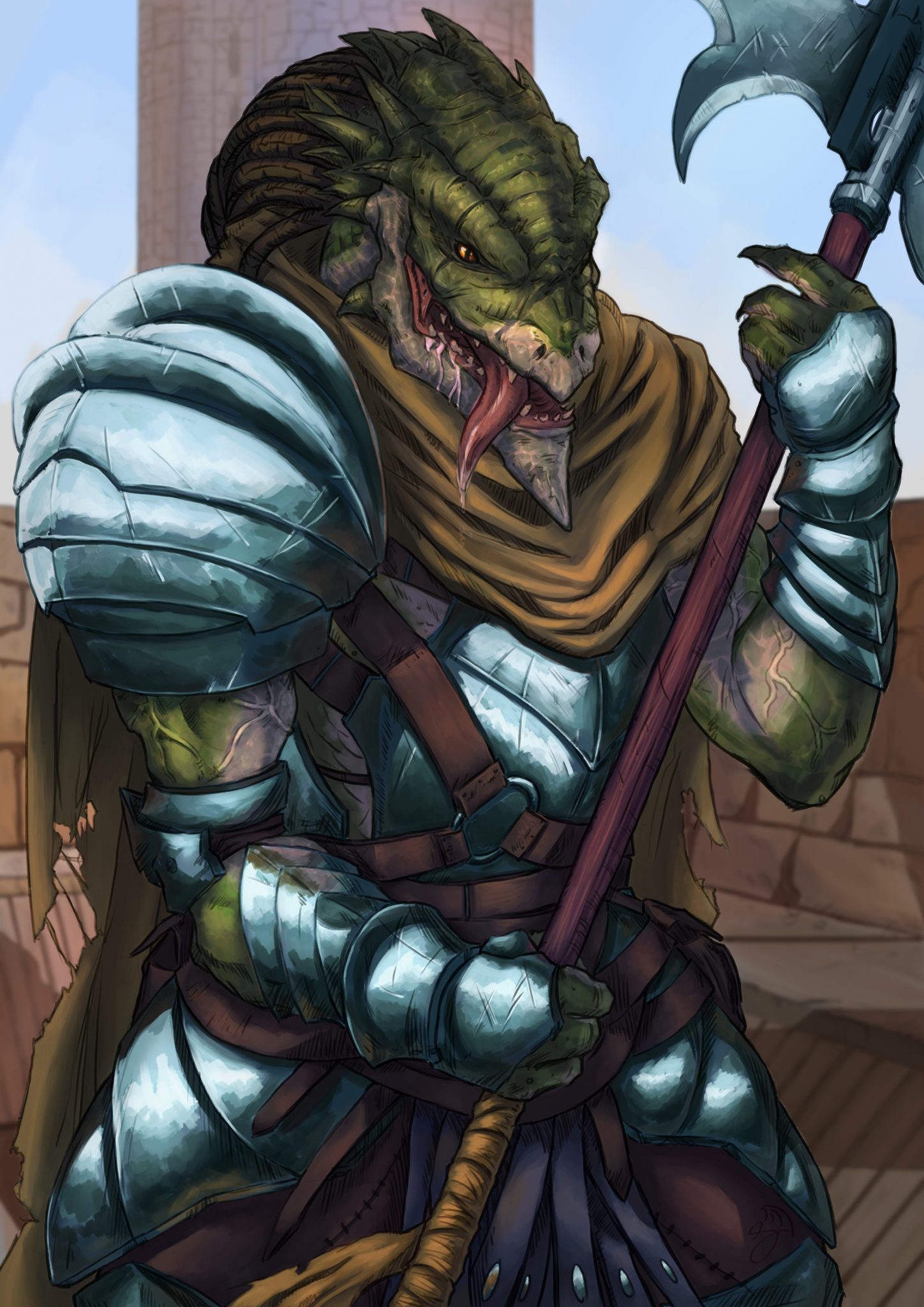
Utility
Utility maneuvers aid your allies either offensively or defensively. A fair number of these maneuvers also displace the enemy from their position.
Commander’s Strike
You can forgo an attack on your turn and use a bonus action to give an ally a weapon attack using their reaction. This is a cool utility ability and its mileage will vary depending on your party composition.
For example, if you have a rogue in the party and can reliably give them an extra use of Sneak Attack this may be worth dipping into.
Most of the time, though, you’d be the person dealing the most damage with a single weapon attack and you’d have to forego a potential bonus action weapon attack to make this one happen. You’d effectively be losing 2 weapon attacks to give a party member 1.
Distracting Strike
After you hit a creature you can distract it. You get some additional damage to your swing and then give the next attack from an ally advantage on their attack roll before your turn.
This is an excellent maneuver since it requires nothing from our action economy and it gives ourselves some bonus damage to boot!
Goading Attack
After you hit a creature, the creature takes some bonus damage has to make a Wisdom saving throw. If they fail the save they have disadvantage on all attacks against targets other than you.
This could be a decent choice if you have a bunch of squishy party members, or if your allies are low on health. We’re not super tanks ourselves, but we have plenty of AC and HP to take a few extra hits if need be!
Maneuvering Attack
Another situation maneuver, but I could see it being great in a pinch. You get some bonus damage and give an ally the ability to use their reaction to move 1/2 their movement speed without provoking an opportunity attack from the creature you hit.
This requires a party member to be engaged in combat alongside you to get the most bang for your buck. It’s a situational choice, but I could see it being a decent trick to have up your sleeve.
Menacing Attack
When you hit a creature you deal bonus damage and you can force them to make a Wisdom saving throw. If they fail the save they’re frightened of you until the end of your next turn.
This forces the creature to make its attack rolls at disadvantage for as long as you are within their sight. This can force the creature out of position or give your allies some additional defenses if you’re in a good position.
Pushing Attack
The creature takes some extra damage and has to make a Strength saving throw or be pushed 15 ft. away from you.
I could see it having some good use in certain situations. For example, it can give you an opening to safely retreat after making your weapon attacks, or you could shove a creature into a deep pit.
Provided your party isn’t composed of primarily ranged attackers, I’d probably rather use Trip Attack to give us all advantage on our melee attacks until the creature can stand up.
Rally
You can use a bonus action to give a friendly creature some temporary HP. The HP is determined by your Superiority Dice + your Charisma modifier.
I like this maneuver, but it’s terrible for this build since Charisma is one of our dump stats.
Trip Attack
This is the same deal as Pushing Attack. It deals extra damage and forces a Strength saving throw from the target. However, in this case, a failed save knocks the target prone.
If you can combo this with your first attack of the round and have a couple of melee-centric party members take their turns before the creature can stand up, this can be an exceptional maneuver. Each melee attack made on a prone target is made at advantage.
This is an excellent maneuver with the right party.
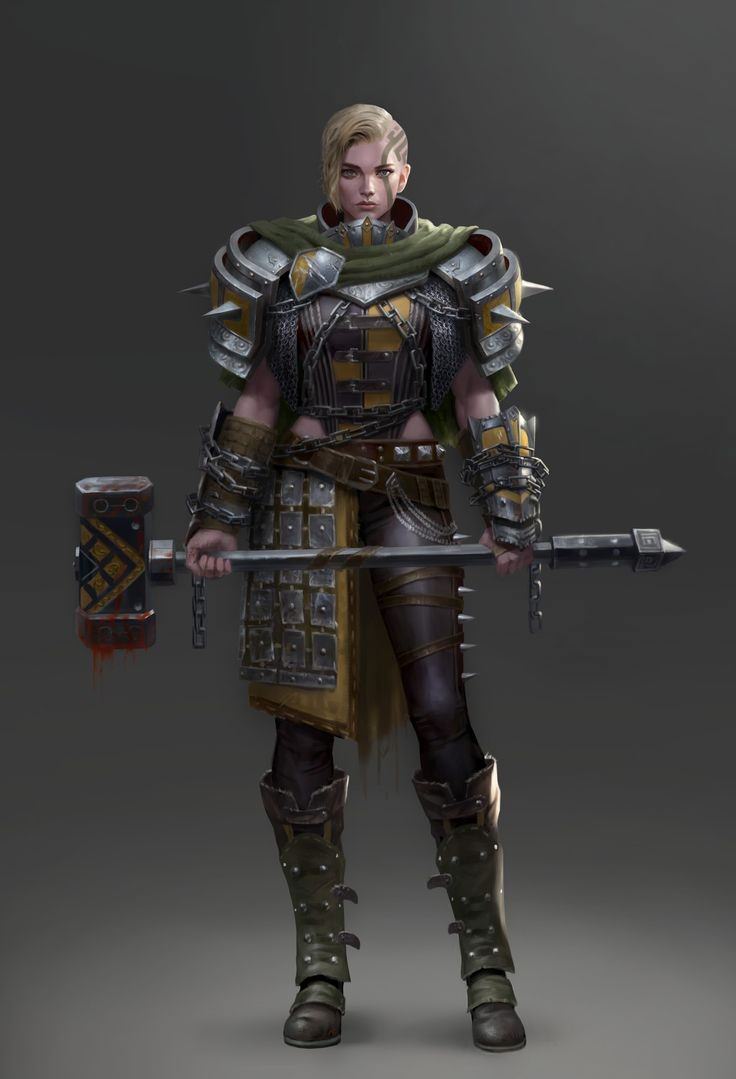
My Picks
We get a total of 9 maneuvers, but we learn 3 off the bat at 3rd level:
- Sweeping Attack
- Parry
- Trip Attack or Distracting Strike depending on your party composition
7th level we can learn 2 more:
- Riposte
- Precision Attack
10th level we can learn 2 more:
- Distracting Strike or Trip Attack
- Menacing Attack
- Potentially swap out Sweeping Attack for Pushing Attack or Goading Attack
15th level we can learn 2 more:
- Pushing Attack or Goading Attack
- Evasive Footwork
- Definitely swap out Sweeping Attack for either Pushing Attack or Goading Attack
Honestly, your maneuver choices are going to depend on your preferences and party composition more than anything. I’d say that Precision Attack, Trip Attack, and Riposte are going to be some of our favorites with this build.
Sweeping Attack will see a bit of use early on, but I’d drop it once you find yourself going up against creatures with bigger health pools.
The ones that I would personally stay away from for sure would be Commander’s Strike, Lunging Attack, and Rally.
Strengths of This Build
This is a character build to follow if you’re looking to be a heavy melee damage dealer that can take a few hits without worrying. Great Weapon Master and our maneuvers give us plenty of things to do with our action economy making combat fun and full of tactical decisions.
Depending on the maneuvers you learn you’ll have varying degrees of combat utility or defensive maneuvers to aid your allies with. You’re always going to be able to do something interesting in combat with this build, it’s not solely about those big -5/+10 attacks.
That being said, our -5/+10 attacks are going to be important to land. Making a solid judgment on when you should and shouldn’t be using Great Weapon Master for an attack is going to be crucial for succeeding with this build.
We are the kings of single target damage. Rush up to the biggest bastard you can find on the battlefield and crush him with our enormous burst damage from Great Weapon Master. If we roll low, then pray to the gods that our Great Weapon Fighting damage rerolls pull through!
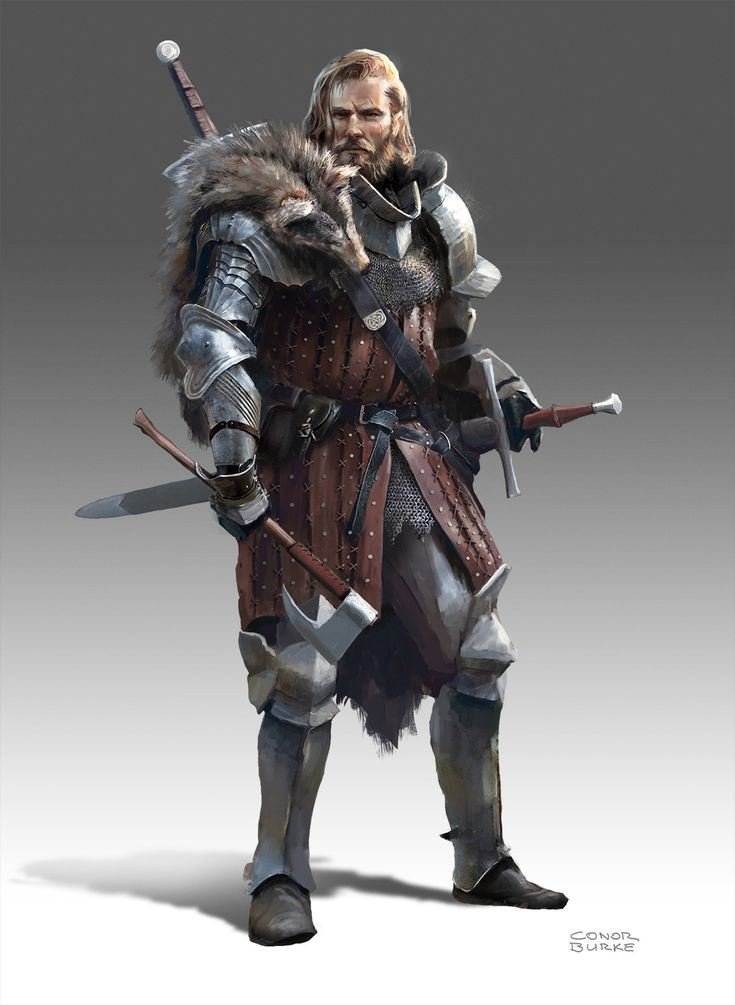
Weaknesses of This Build
If you’re yearning for a character that’s the face of the party and the king of social interactions, this build isn’t going to cut it. While you can still have plenty of interesting role-play with this type of character, you’re never going to be a silver-tongued socialite.
Skill checks are also a weak point of this build. We’ve focused ourselves almost entirely on our Strength, Constitution, and Dexterity. We have a bit of Wisdom, but it’s not anything to write home about. Any sort of skill check that requires Intelligence, Wisdom, or Charisma will be best handled by one of our allies.
We also don’t have any great answers for AoEs. This is more of an issue with martial characters in general than to say a fighter.
Conclusions
This is a fun build for someone who intends to rush into the frontlines and systematically carve through the enemy’s biggest bad guys. You’re going to be fishing for big hits and big damage while taking a fair share of the enemy’s attacks for your team.
Since we’re not entirely dumping Dexterity we’re still useful even when we’re forced to attack at a range. Let’s face it, we’re not always going to be able to hit things with melee, we may as well have a decent backup plan. In these scenarios though we should be sure to continue to move towards the enemy while we shoot our longbow or crossbow at them.
The Battle Master’s maneuvers bring a lot of flavor, utility, and customization to what would otherwise be a fairly stale melee combat build. You get plenty of maneuvers to choose from and will have plenty of chances to use them provided that your party capitalizes on your short rest opportunities.
All-in-all, this is a fun build to use if you’re focused on creating a tanky melee character that can dish out excellent sustained single target damage while still having the option to provide a bit of combat utility to your allies. This is right up my alley, so I hope you enjoy it!

say you’d want to mix in some paladin for flavor, where would you do that and how far would you dip?
That’s a tough one. I’d probably shoot for about 3 levels of Paladin max. Fighter gets some good stuff at 17.
I’d probably go for those levels after Fighter 5 so you get Extra Attack.
This is a great breakdown — thank you! I’m making a thug ex-soldier and definitely want to use a two-handed heavy weapon, which I’ve never used in my 20+ years of D&D (gasp). I’ve been mulling over Champion fighter for the improved critical, Battle Master for the maneuvers, or Berserker Barbarian. But now I’m sold: Battle Master with reach sounds awesome. I appreciate your input on the maneuvers too. I was thinking of lunging attack because a 15’ reach sounds pretty great but you’re right about it being very situational. Woohoo I’m excited now!!
Thank you!
You couldn’t go wrong with any of those choices but the Battle Master is just so fun thanks to maneuvers!